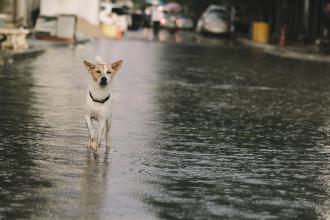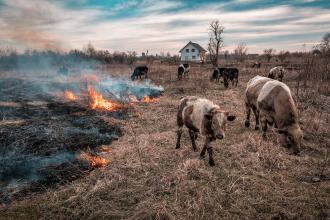
A well-thought-out disaster or emergency plan is important for any facility, clinic, operation, or household that houses animals. A plan ensures disaster preparedness, saves animal and human lives, and helps to deal with the aftermath of a disaster. Learn about disaster planning with animals and how to write your own disaster plan.
On December 3, 2021, the USDA's Animal and Plant Health Inspection Service (APHIS) amended the Animal Welfare Act Regulations to require contingency plans for the handling of animals during emergencies and training of employees on implementing those plans during emergencies (9 CFR § 2.134 (2022)). This lifted a stay on a December 2012 rule, and regulations became effective on January 3, 2022.
Disaster Training and Best Practices
Animals in Disaster Training

DHS. FEMA. Emergency Management Institute.
These online training modules provide information to animal owners and community officials about typical hazards, disaster affects on animals, reducing disaster impact, and disaster planning. The modules include:
- Animals in Disaster: Awareness and Preparedness
- Animals in Disaster: Community Planning
Best Practices in Emergency Management

National Alliance of State Animal and Agricultural Emergency Programs (NASAAEP).
NASAAEP provides current (2023) best practices in animal emergency management for:
- Decontamination
- Evacuation and Transport
- Mass Care and Sheltering
- Disaster Medical Response
- Animal Search and Rescue
- Community Engagement and Outreach
- Planning and Resource Management
 An official website of the United States government.
An official website of the United States government.